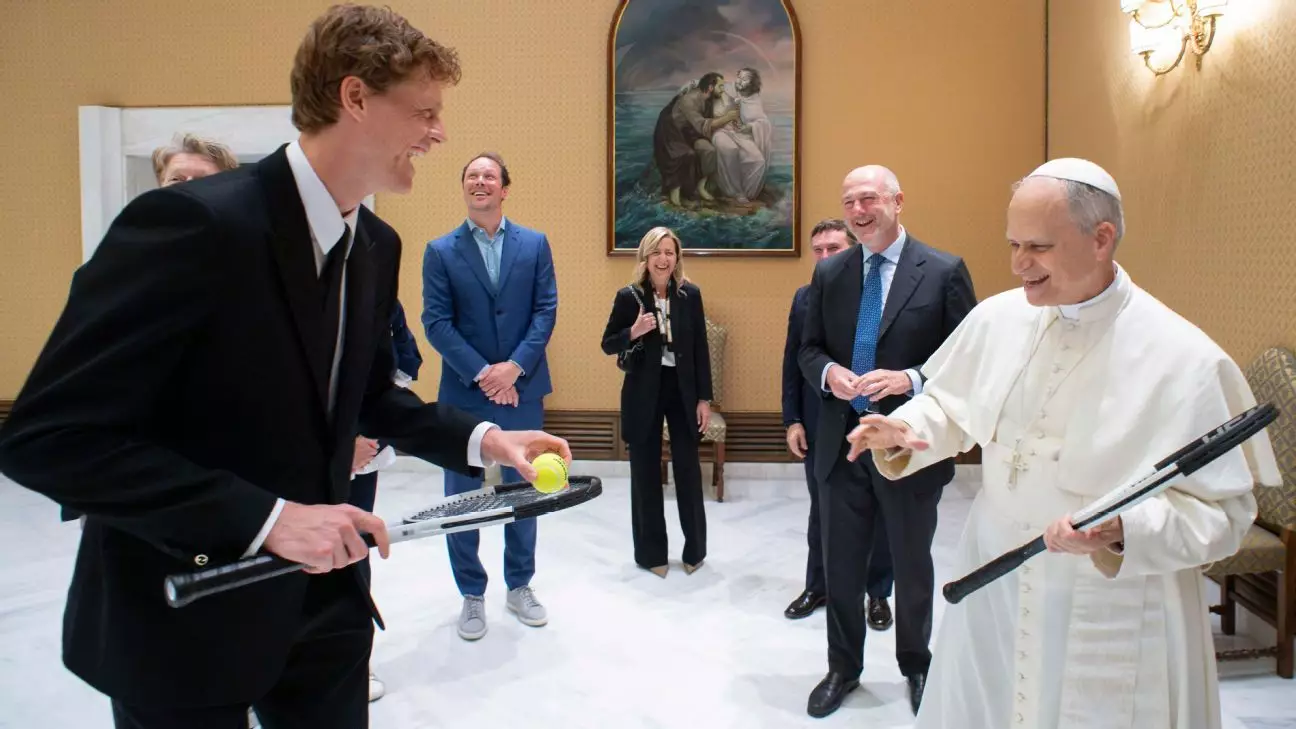In a delightful intersection of faith and athleticism, Pope Leo XIV recently met with Jannik Sinner, the rising tennis star and current top-ranked player, at the Vatican. The occasion unfolded on a serene Wednesday afternoon amid the hustle and bustle of the Italian Open, where Sinner, taking a break from competition, made the pilgrimage to the Vatican with an unexpected gift: a tennis racket. This meeting was far more than a simple exchange; it symbolized an intersection of cultures, sporting prowess, and shared human experiences.
What makes this encounter particularly noteworthy is the light-hearted banter that colored the discussion. Just days before the meeting, the pope had jestingly dismissed Sinner’s presence during a press conference, playfully referencing the double entendre in Sinner’s name. This initial humorous brush-off quickly morphed into a moment of warmth, where both figures could relate as passionate sports enthusiasts. Leo, the first American pope, openly professed his love for tennis, illustrating how even the highest ecclesiastical figure remains grounded in the simple joys of life.
The Spirit of the Match
When Sinner arrived, accompanied by his family, the atmosphere in the Vatican became electric with anticipation. The sight of the young athlete, a revered figure in Italian tennis, presenting a racket to the pope, transcended mere symbolism. It spoke volumes about the universality of sport, where walls of distinction—be they religious, cultural, or generational—are dissolved in the shared love for the game.
Engaging Sinner directly, Pope Leo XIV, at 69 years of age and dressed in his traditional white cassock, quipped about Wimbledon’s strict dress code, suggesting a future tennis match could lead to some fashion faux pas. Such jovial interactions foster an environment of camaraderie that often gets overlooked in formal settings. The pope’s humor illuminated not only his passion for the sport but also his ability to connect with the youth, an essential bridge in today’s fast-evolving society.
Resilience in the Spotlight
Jannik Sinner, fresh off a three-month hiatus due to an unfortunate doping suspension—which he contested as an accidental contamination—approached this meeting not just as an athlete but as a burgeoning icon of resilience. His journey to reclaim his position after such setbacks is inspiring, especially for young athletes dealing with their own challenges. The way he navigated the tennis world has garnered him respect and recognition, and meeting the pope undoubtedly adds another feather to his cap.
As Sinner prepares to face the renowned Casper Ruud in the quarterfinals, the energy from this encounter could serve as a morale booster. The stakes could not be higher; Sinner has aspirations of becoming the first Italian male to win the prestigious Rome title since the legendary Adriano Panatta did in 1976. The weight of these expectations is tangible, but this meeting with the pope has possibly injected a sense of divine support into his campaign.
Symbolism Beyond Athletics
The significance of this meeting extends beyond tennis; it taps into a broader narrative of hope and rejuvenation. With Angelo Binaghi, president of the Italian Tennis and Padel Federation, gifting Pope Leo XIV an honorary membership card, this interaction signals a profound appreciation for not just sports but also a celebration of excellence, unity, and sharing passions. Binaghi’s statement declaring that “we felt the passion that Leo XIV has for our sport” encapsulates the essence of what this encounter represents—a mutual admiration transcending the boundaries of faith and athletics.
Moreover, showcasing the Davis Cup trophy, a testament to Italy’s recent triumphs, alongside the Billie Jean King Cup trophy from 2024, serves as a poignant reminder of the victories that can be achieved through perseverance, teamwork, and community spirit. Such displays of success resonate with both athletes and the global audience, stirring a collective sense of pride and inspiration.
In a world often divided by various ideologies, the imagery of a pope and a tennis champion sharing a common love can serve as a reminder of the unifying power of sports and community, hinting at a future filled with possibility and profound connections.


Leave a Reply